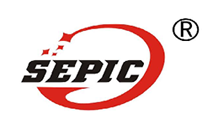Plasma powder surfacing technology
Plasma powder surfacing technology
The surfacing process is one of the effective technical methods to improve the wear resistance, corrosion resistance and impact resistance of the metal surface.
1. Working principle: Plasma powder surfacing uses plasma arc as the heat source. The high temperature generated by the plasma arc is used to rapidly heat the alloy powder and the surface of the substrate and melt, mix, diffuse and solidify together. After the plasma beam leaves, it self-excitedly cools to form a The high-performance alloy layer can realize the strengthening and hardening of the surface of the part. Because the plasma arc has high arc temperature, large heat transfer rate, good stability, and strong controllability of penetration, it can be adjusted by adjusting the relevant surfacing welding process. The parameters can be freely adjusted within a certain range of the thickness, width and hardness of the surfacing layer. After plasma powder surfacing, a fusion interface is formed between the base material and the surfacing material, which has high bonding strength, dense structure of the surfacing layer, good corrosion resistance and wear resistance, less dilution of the base material and surfacing material, and little change in material characteristics. Using powder as a surfacing material can improve the selectivity of alloy design, in particular, it can smoothly surfacing refractory materials and improve the wear resistance, high temperature resistance and corrosion resistance of the workpiece.
2. Technical advantages:
1. The surfacing cladding alloy layer is metallurgically bonded with the workpiece matrix, with high bonding strength;
2. Fast surfacing cladding speed, low dilution rate, the dilution rate of plasma arc surfacing can be controlled at 5%-10%, or lower;
3. The surfacing layer has dense structure and beautiful shape, and the surfacing process is easy to realize mechanization and automation;
4. Plasma surfacing can be directly carried out on the surface of rusty and oily metal parts without complicated processing technology;
5. The plasma arc has high temperature, concentrated energy, good stability, and small residual stress and deformation caused on the workpiece;
6. Good controllability. The arc parameters such as the atmosphere and temperature of the plasma arc can be adjusted by changing the power, the type of gas, the flow rate, and the structural size of the nozzle, so as to realize efficient and automated production and improve labor productivity;
7. Wide range of materials used. As a deposited material, surfacing alloy powder is not restricted by processing techniques such as casting, rolling, wire drawing, etc., and alloy powders of different compositions can be configured according to different performance requirements. It is especially suitable for hard and resistant materials that are difficult to wire but easy to make. Grind the alloy to obtain the surfacing layer with the required properties.



 Tel:022-63288515
Tel:022-63288515
 Fax:022-63285515
Fax:022-63285515
 No.334, Wanxiang Road, Dagang District, Tianjin
No.334, Wanxiang Road, Dagang District, Tianjin